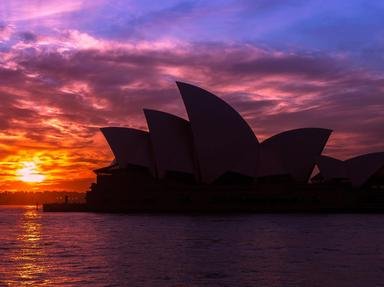Quiz Answer Key and Fun Facts
1. 1854: Gold miners dig in
2. 1861: Inaugural race run and won
3. 1880: Outlaw in custody in Glenrowan
4. 1907: First lifesaving club opens
5. 1920: Kangaroo sprouts wings in Winton
6. 1923: Beloved Aussie product greases the shelves
7. 1928: Outback Doctors take to the skies
8. 1932: Historic Sydney landmark opens to public
9. 1975: Prime Minister sacked by Governor-General
10. 2017: Legislation passed after landslide 'Yes' vote
Source: Author
leith90
This quiz was reviewed by FunTrivia editor
bloomsby before going online.
Any errors found in FunTrivia content are routinely corrected through our feedback system.

